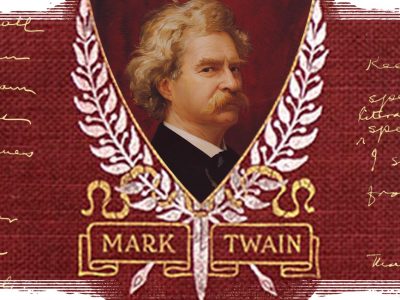Early last summer, I was among a dozen American university professors studying terrorism in Israel. On the Sabbath we took a day off to visit the religious sites in Jerusalem.
Given the terrorist threat, armed security personnel always accompanied us. A young man named Uli, an Israeli Army reservist and graduate student at Tel Aviv University, with his Uzi submachine gun, was our constant companion. For the Jerusalem tour, Uli concealed his Uzi in one of those backpacks which are standard student accouterment on campuses throughout the world. That day, in addition to the ever-present Uli with the Uzi, the twelve professors had five additional armed escorts; Israeli security officers in tourist mufti. Most of the members of this scholarly entourage were American Jews, including one of my closest friends Jonathan, a professor of Chinese history from Georgia.
Other than me, the only Christian in this party was a young, Harvard-educated political scientist, a professor at a prestigious eastern university and recent convert from atheism to Christianity who was undergoing instruction to become a Roman Catholic. As we walked the Via Dolorosa, the route along which Christ bore the cross to Golgotha, he genuflected and prayed at each station of the cross. This young man had impressed me earlier when he explained to our Jewish colleagues the Roman Catholic doctrine of the immaculate conception; something even most Protestants do not fully comprehend.
When we reached the second to last station of the cross, the Church of the Crucifixion, my senses began to swirl. Although I am a Christian, I could be more faithful. By no means am I a “Bible thumper.” As the question goes, “If put on trial for my faith would there be enough evidence to convict me?”
As I stood before an enormous crucifix supposedly located at the spot Christ was crucified, what amazed me was not the site itself, but the way believers, pilgrims from every corner of the world, approached it. Many were on their knees, praying and weeping. Even my Jewish professor friend from Georgia crawled beneath the altar at the foot of the crucifix to touch a stone that purportedly held the cross in place. Upon emerging, he asked why I had not gone under the altar to touch the holy relic. I sheepishly explained that while I considered such acts fine for others; I personally thought it a bit idolatrous. That was better than telling him such displays of devotion embarrass this frozenly chosen Presbyterian.
Although spiritually moved by what I saw, I wondered how this could be the exact spot of the crucifixion since I was on the second floor of a church constructed hundreds of years ago. Just a few feet away, the Church of the Holy Sepulcher was built around the empty tomb of Jesus. According to the Bible, Jesus was buried in the tomb of a wealthy Jewish admirer. I wondered why someone so rich would select a tomb close to Golgotha, the garbage heap where Romans crucified criminals. Odd what questions intrude into our moments of epiphany.
Then something amazing happened. Standing next to me, his head bowed in prayer, was the professor who had recently converted from atheism to Christianity. At first, almost imperceptibly, he began to whimper. Whimpering turned to sobbing. His shoulders shook as he dropped to his knees then prostrated himself, his arms outstretched toward the foot of the cross, his sobbing and weeping intensified before trailing off into muttered prayers. While my reaction at the foot of the cross was to question its location, my colleague, by contrast, let the enormity of the moment enthrall him. After all, we both believed that near to where we stood God-incarnate, having been humiliated, beaten and flayed, was crucified for us and for a thousand Ulis with their Uzis and Alis with their Kalashnikovs. Was this what Christ meant by childlike faith? My questions at the cross were juxtaposed uncomfortably to his faith.
Uli with the Uzi, a gaggle of sweating professors in Israel to study terrorism and our armed escorts touring an ancient city where three religions converge amidst the ever present threat of suicide bombers epitomized the surreal. Emerging from the Church of the Holy Sepulcher, I thought that the Prince of Peace, too, walked this route accompanied by armed men. We do indeed live in a troubled world and the real message of the walk, both the one taken by Christ two thousand years before and the one we took that June day with our armed escorts, could not have been more clearly illustrated than it was by the unashamed faith of a new believer.




